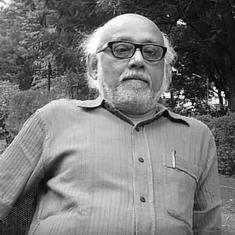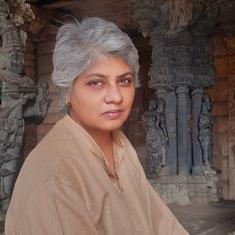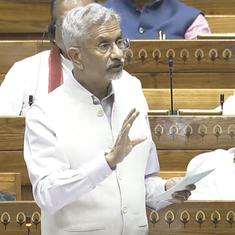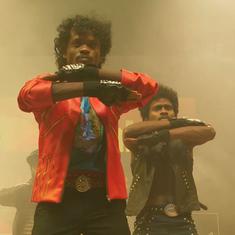Half Girlfriend, a viral teaser informed us in August, brought together two extremes of this new social divide: a Hindi-medium guy from rural Bihar confronts Delhi’s notoriously elitist college, St. Stephen’s (“Steven’s, as the English types call it…where even the grass grows in English”). He falls in love with an English-medium girl from Lutyens’ Delhi, an E-1 according to Bhagat’s previous classification of English speakers, who doesn’t look down on him but isn’t crazy about him, either. It was as promising a plot as you could imagine around his larger idea.
It’s sad, then, that Half Girlfriend doesn’t tell you any more about the challenges of “non-English types”, to whom the book is dedicated, than job listings in your daily newspaper. You can sense Bhagat trying to tell you things through a drawn-out love story that goes from Delhi to New York via Dumroan, but they seem to be products of pure imagination. Here are five myths he floats.
1) The spoilt brats of St. Stephen’s have hair longer than that of girls. They are rich and move in gangs. “Where you from, man?” a long-haired bully needles the lost Bihari boy the first time he enters the college, and on hearing the answer, asks him if he was there to interview for the peon’s position, laughing an evil laugh as he walks off with his crew.
Apart from an admission interview with “English-speaking monsters”, that is the only interaction he has with “English types” in three years of college. Since there isn’t a single scene set inside a classroom, we have no way of knowing how he deals with the English-medium instruction or the social hierarchy within the English-speaking crowd. The only people Madhav Jha talks to are other Bihari boys or the girl from Lutyens' Delhi who cares about what he’s saying and not the language in which he is saying it.
The only time he leaves the campus is to go to a party at her house, so we have no idea how the guy from a small town in Bihar negotiates Delhi or if there is any way in which the city changes him in three years. If the conflict in the book had to come from the good old poor-boy-rich-girl situation, then you wonder what the point was of the Delhi-Bihar or Hindi-medium-St. Stephen’s premise.
2) Rich people are bad. This is something Bhagat shows us through the world of Riya, the self-loathing rich girl. Beneath the façade of grandeur ‒ a multi-billion-rupee telecom business, an Aurangzeb Road address, a mansion with BMWs, chandeliers, swimming pools, and parties with catered sushi and champagne ‒ are ugly secrets that will come tumbling out.
In a scene right out of Raj Kapoor films from the 1950s, Madhav goes to Riya’s birthday party in Lutyens’ Delhi, wearing a borrowed blazer and changing two buses to get there, and sees their shallowness through all the glitter. Men judge him by his ill-fitting blazer, girls are sticking to rich boys, and the love of his life is wooed by a 24-year-old “hotel mogul” from London, a family friend’s son who suffixes his sentences with “innit”.
In case the reader still has any empathy for the wealthy, Bhagat makes them do such abominable things that the combined effect is more than comical than scary: Riya’s father sexually abused her in the past; her mother doesn’t give a damn about anything; her brothers are fighting over property; her hotel mogul-husband cheats on her with a “Kristin” and beats her for wearing western clothes, often at the urging of his London-socialite mother. You feel bad for Kristin.
3) The only hope for this world is erstwhile royals. The poor Bihari boy is in fact a prince, “for real”, of Dumroan, one of India’s oldest princely states. All he’s inherited is a crumbling haveli and a clutch of servants who continue to serve him and his mother purely out of loyalty. Still, even a broke prince is a prince, so when he returns to Dumroan after rejecting a job offer from HSBC (“I am done serving rich people,” he tells them), a coronation ceremony is held, a two-kilogram crown taken out of the family safe and placed on his head, and the loser of St. Stephen’s declared the Rajkumar Sahib of Dumroan.
His people line up to seek his blessings. He must prove himself to be their deserving ruler, however, since it’s 2014, so an opportunity presents itself right away. The government has failed the people of Dumroan, it turns out. There are no toilets in the tehsil’s only school, the Dumraon Royal School, run by Rani Sahiba, so children don’t attend school, but the MLA is busy getting rich. And since tried-and-tested royalty is the only answer to failed democracy, Rajkumar Saheb sets out to get the job done.
It’s not easy; he has to deliver a speech, in English, before Bill Gates, who’s on a poverty-only tour of Bihar. Madhav Jha does it, naturally, leading the people of Dumroan to fall at his feet. “You are our hero,” says one. Says another, “He deserves to be our king.”
4) All girls think and act alike. “Girls never tell you anything straight out anyway”. “Girls cannot stand being ignored.” “It’s funny women feel they have the right to demand physical affection whenever they want.” “Girls always do the opposite of what they say they want to do.” “When rich guys say something, girls find it extra funny.” “Girls have no idea how much it hurts when our love is rejected.” It goes on and on.
5) Biharis have the poorest English. But not one example of this poor English in the book ‒ “myself Madhav”; “your good name?”; “our kids are deserving better only” ‒ can be attributed to just one place in India. “I’m going to say everything in English. Just imagine my words in Bhojpuri-laced Hindi, with the worst possible English thrown in,” begins Bhagat’s protagonist, freeing the author of the headache of actually having to observe the way Biharis talk.
But these are quibbles really. What is the sacrifice of a little authenticity in the service of a great story? How petty of one to wonder if it’s possible for a prince in India, however poor, to know no English.










